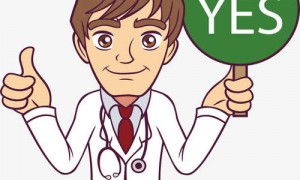Basic Information
Chinese name: AIDS
AKA: Acquired Immune Deficiency Syndrome
English name: acquired immunodeficiency syndrome, AIDS
Clinic: Department of Infectious Diseases
Infectious: yes
Etiology
HIV belongs to the group of human lentiviruses in the genus Lentiviridae of the family Retroviridae, and is divided into types 1 and 2. HIV-1 is currently prevalent worldwide. HIV-1 is a spherical particle with a diameter of about 100-120 nm, consisting of a core and an envelope. The core includes two single-stranded RNA strands, core structural proteins and enzymes necessary for virus replication, including reverse transcriptase, integrase and protease. HIV-1 is a highly mutated virus, and irregular antiviral therapy is an important cause of viral drug resistance. HIV-2 mainly exists in West Africa, and is currently found in the United States, Europe, South Africa, India and other places. The ultrastructure and cell tropism of HIV-2 are similar to HIV-1, and its nucleotide and amino acid sequences are significantly different from HIV-1.
HIV's ability to survive in the external environment is weak, and its resistance to physical and chemical factors is low. Sensitive to heat, HIV can be completely inactivated by treatment at 56°C for 30 minutes and 100°C for 20 minutes. Pasteurization and most common concentrations of chemical disinfectants can inactivate HIV. such as 75% alcohol, 0.2% sodium hypochlorite, 1% glutaraldehyde, 20% acetaldehyde and acetone, ether and bleaching powder can inactivate HIV. But UV or gamma rays cannot inactivate HIV.
Epidemiology
1. Epidemiological overview: WHO reported that in 2010, there were 34 million living HIV carriers and AIDS patients in the world, 2.7 million new infections, and 1.8 million deaths throughout the year. There are more than 7,000 new infections every day, which are prevalent in all regions of the world, but more than 97% are in low- and middle-income countries, especially in Africa. Experts estimate that the epicentre of the global epidemic may move from Africa to Asia. The China CDC estimates that by the end of 2011, there were about 780,000 living HIV carriers and AIDS patients in my country, 48,000 new infections and 28,000 deaths throughout the year. The epidemic has covered all provinces, autonomous regions, and municipalities directly under the Central Government. At present, my country is facing the peak period of AIDS incidence and death, and it has begun to spread from high-risk groups such as drug addicts and prostitutes to the general population.
2. Source of infection: HIV-infected and AIDS patients are the only source of infection of this disease.
3. Transmission route: HIV mainly exists in the blood, semen, vaginal secretions and breast milk of infected persons and patients. ① Sexual activity: Unprotected sexual activity with an infected partner, including same-sex, opposite-sex, and intersex contact. ②Intravenous drug use: Sharing the unsterilized injection tools used by the infected person with others is a very important way of HIV transmission. ③ Mother-to-child transmission: During pregnancy, childbirth, and breastfeeding, HIV-infected mothers may transmit HIV to fetuses and infants. ④ Blood and blood products (including artificial insemination, skin transplantation and organ transplantation). Handshaking, hugging, courteous kissing, eating and drinking together, sharing toilets and bathrooms, sharing offices, public transportation, recreational facilities and other daily contact will not transmit HIV.
4. Susceptible crowd: The crowd is generally susceptible. High-risk groups include: gay men, intravenous drug users, frequent sexual contacts with HIV carriers, frequent blood transfusions and blood products, and babies born to HIV-infected mothers.
Pathogenesis
(1) The process of virus infection
1. Primary infection HIV needs to enter cells by means of receptors on the surface of susceptible cells, including the first receptor and the second receptor. After HIV enters the human body, it reaches the regional lymph nodes within 24-48 hours, and the viral components can be detected in the peripheral blood in about 5 days. Viraemia then results, leading to acute infection.
2. The infection process of HIV in human cells Adsorption and penetration: After HIV-1 infects the human body, it selectively adsorbs on the CD4 receptor of the target cell, and enters the host cell with the help of the coreceptor. Mature viral particles are formed after circularization and integration, transcription and translation, assembly, maturation and budding.
3. Three clinical outcomes after HIV infection Because the body's immune system cannot completely clear the virus, resulting in chronic infection, it can be clinically manifested as three outcomes: typical progressor, rapid progressor, and long-term non-progressor.
(2) Anti-HIV immune response
Anti-HIV immune response includes specific immune response and non-specific immune response, and the specific immune response is the main one. Including specific humoral immunity and specific cellular immunity, the human immune system mainly directly or secretes various cytokines (such as tumor necrosis factor, interfering , etc.), inhibit virus replication.
(3) Immunopathology
1. Decreased number of CD 4+ T lymphocytes
After HIV infection, the number of CD4+ T lymphocytes in the body continues to decrease, which can be divided into 3 stages: ①Acute infection phase: The number of CD4+ T lymphocytes decreases rapidly in a short period of time. It can recover to the normal level or close to the normal level on its own; ② Asymptomatic infection period: The number of CD4+ T lymphocytes continues to decrease slowly, mostly between 800 and 350/mm3. This period lasts from several months to more than ten years, and the average duration about 8 years; ③ Symptomatic period: CD4+ T lymphocytes decreased rapidly again, mostly below 350/mm3, and some advanced patients dropped to below 200/mm3 and decreased rapidly.
2. CD4+ T lymphocyte dysfunction
Mainly manifested as the replacement of T helper 1 (Th1) cells by T helper 2 (Th2) cells, impaired antigen-presenting cell function, reduced production of interleukin-2 and loss of ability to activate the antigen response, making HIV/AIDS patients. prone to various infections.
3. Abnormal immune activation
After HIV infection, CD4+, CD8+ T lymphocytes express abnormally elevated levels of immune activation markers such as CD69, CD38 and HLA-DR. Abnormal immune activation status not only measures changes in plasma viral load but also predicts the rate of CD4+ T lymphocyte reduction.
4. Immune Reconstitution
It means that after antiviral treatment, the abnormal immune changes caused by HIV can return to normal or close to normal levels, the incidence of various opportunistic infections and tumors related to AIDS is reduced, and the mortality and morbidity of AIDS patients are reduced. However, anti-HIV therapy cannot restore immune reconstitution in all AIDS patients, nor can it rebuild the anti-HIV CD4+ T lymphocyte-specific immune response, and the CD8+ T lymphocyte-specific anti-HIV ability also decreases, which means that patients need long-term maintenance medication .
pathological changes
(1) Pathological changes of the immune system: including HIV-related lymphadenopathy, high depletion of spleen lymphocytes, premature degeneration of the thymus in children, and reduction of bone marrow cells in advanced patients.
(2) Changes in clinical cases: AIDS is a disease involving multiple organ systems throughout the body, such as skin and mucous membranes, lymph nodes, eyes, respiratory system, digestive system, nervous system, and urinary system. In addition to immune system lesions, it also includes multi-system opportunistic infections (such as viruses, bacteria, fungi and protozoa) and malignant tumors (including Kaposi's sarcoma, malignant lymphoma and cervical cancer), which constitute the complex clinicopathological changes of AIDS.
clinical manifestations
In my country, HIV infection is divided into acute phase, asymptomatic phase and AIDS phase.
(1) Acute stage
It usually occurs around 2-4 weeks after initial HIV infection. The main clinical manifestations are fever, sore throat, night sweats, nausea, vomiting, diarrhea, rash, arthralgia, lymphadenopathy and neurological symptoms. The clinical symptoms of most patients are mild and relieve after 1-3 weeks. HIV-RNA and P24 antigen can be detected in the blood during this period, while HIV antibodies do not appear until several weeks after infection. The CD4+ T lymphocyte count was transiently decreased, and the CD4/CD8 ratio could be inverted.
(2) Asymptomatic period
This phase can be entered from the acute phase, or directly entered without obvious acute phase symptoms. The duration of this period is generally 6-8 years. But there are also those who progress rapidly and those who do not progress for a long time. The length of this period is related to various factors such as the quantity, type, route of infection, and immune status of the infected virus.
(3) AIDS period
The final stage after HIV infection. The CD4+ T lymphocyte count in the patient was significantly decreased, most of which were <200/mm3, and the HIV plasma viral load was significantly increased. The main clinical manifestations of this stage are HIV-related symptoms, various opportunistic infections and tumors.
HIV-related symptoms: Mainly manifested as fever, night sweats, and diarrhea lasting more than one month; weight loss of more than 10%. Some patients present with neuropsychiatric symptoms, such as memory loss, mental apathy, personality changes, headache, epilepsy and dementia. In addition, persistent generalized lymphadenopathy can also occur, which is characterized by ①. Lymph nodes in two or more locations except the groin; ②. The diameter of the lymph nodes is ≥ 1 cm, without tenderness and adhesion; ③ Duration of 3 more than a month.
Common symptoms of HIV-related opportunistic infections and tumors: fever, night sweats, swollen lymph nodes, cough, sputum, hemoptysis, dyspnea, headache, vomiting, abdominal pain and diarrhea, gastrointestinal bleeding, dysphagia, decreased appetite, oral leukoplakia and ulcers, various rash, vision loss, blindness, dementia, epilepsy, limb paralysis, weight loss, anemia, fecal incontinence, urinary retention, intestinal obstruction, etc.
common opportunistic infections
Respiratory system: Pneumocystis carinii pneumonia (PCP), tuberculosis, recurrent bacterial, fungal pneumonia.
Central nervous system: cryptococcal meningitis, tuberculous meningitis, toxoplasmic encephalopathy, various viral meningoencephalitis.
Digestive system: Candida albicans esophagitis, cytomegalovirus esophagitis, enteritis; Salmonella, Shigella, Campylobacter jejuni and Cryptosporidium enteritis.
Oral: oral thrush, leukoplakia, recurrent oral ulcers, gingivitis, etc.
Skin, lymph nodes: herpes zoster, molluscum contagiosum, condyloma acuminatum, fungal dermatitis, onychomycosis, lymph node tuberculosis.
Ocular: Cytomegalovirus and toxoplasmic retinitis.
Common tumors: cervical cancer, malignant lymphoma, Kaposi's sarcoma, etc.
Disease hazards
1. Harm to patients themselves: At present, AIDS has become a controllable chronic disease. However, a considerable number of patients still die or become disabled due to lack of timely diagnosis and treatment, viral resistance or drug side effects. At the same time, due to social discrimination against the infected, it often brings heavy mental pressure to the infected.
2. Harm to others: Unprotected sexual behaviors, multiple sexual partners, shared needles and intravenous drug use, and mother-to-child routes can transmit the virus to others.
3. Harm to the family and society: Although my country has already implemented the policy of “four exemptions and one care” for HIV-infected patients, the treatment of advanced complications may still bring heavy economic burdens and social problems to the family and society.
Diagnosis and differentiation
Auxiliary test for HIV infection
① HIV antibody primary screening test (ELISA): high sensitivity, false positives may appear. For patients with positive screening, it should be confirmed by a confirmatory test. ② HIV antibody confirmatory test (WB): WHO stipulates that as long as two env bands appear, it can be judged as positive. ③HIV-RNA: Sensitivity is 100%, but false positives occasionally occur, but false positive results are usually lower than 2000cp/ml, while the viral load in acute infection is usually high, with an average of 106cp/ml. ④ p24 antigen: helpful for early diagnosis, high sensitivity and specificity. ⑤ Rapid detection test: Whole blood or capillary blood can be collected, and results can be obtained in 15-30 minutes. However, the false positive and false negative rates are high, and it is not used as a routine test.
Auxiliary examination for complications
AIDS is a disease that can affect various organs of the body, so in general, all kinds of blood tests, excretions, secretions, body fluid tests (including urine, feces, sputum, bronchoalveolar lavage fluid, cerebrospinal fluid, pleural effusion, ascites), bone marrow examination and imaging examinations for different parts and types of complications (including ultrasound, X-ray, CT, MRI, PET-CT of various parts), biopsy or cytology examination (for tumors , the diagnosis and identification of infections such as mycobacteria, fungi, and cytomegalovirus are of great significance). The above examinations require selective examinations for the different complications of each patient.
It should be specially mentioned that patients in each stage, regardless of whether their condition is stable, need to monitor CD4+ T lymphocyte counts and HIV-RNA for timely initiation of antiviral therapy and adjustment of antiviral medication.
Diagnostic criteria
1. Diagnosis of HIV infection: ① Epidemiological history: history of unsafe sex, history of intravenous drug use, blood or blood products that have not been tested for anti-HIV antibodies, children born to HIV-positive persons or occupational exposure history, etc. ②Clinical manifestations: The manifestations are different in each stage, see the following. ③Laboratory examination: The diagnosis of HIV infection must be confirmed by HIV antibody positive by confirmation test, and the detection of HIV-RNA and P24 antigen is helpful for the diagnosis of HIV/AIDS, especially it can shorten the antibody "window period" and help early diagnosis HIV infection in neonates. (1) Acute phase Diagnostic criteria: The patient has a recent epidemiological history and clinical manifestations, and the diagnosis can be made by combining laboratory HIV antibody from negative to positive, or only by laboratory test HIV antibody from negative to positive. Antibodies can be detected in about 80% of HIV-infected patients 6 weeks after infection, almost 100% of HIV-infected patients can detect antibodies after 12 weeks, and only a very small number of patients can be detected within 3 months or 6 months after infection .
(2) Asymptomatic period Diagnostic criteria: Epidemiological history, combined with HIV antibody positive can be diagnosed, or only laboratory test positive HIV antibody can be diagnosed.
(3) AIDS stage (1) Unexplained persistent irregular fever above 38°C, > 1 month; (2) Chronic diarrhea more than 3 times a day, > 1 month; (3) Within 6 months Weight loss of more than 10%; (4) recurrent oral Candida albicans infection; (5) recurrent herpes simplex virus infection or herpes zoster virus infection; (6) Pneumocystis pneumonia (PCP); (7) recurrent Bacterial pneumonia; (8) active tuberculosis or nontuberculous mycobacterial disease; (9) deep fungal infection; (10) central nervous system space-occupying lesions; (11) dementia in young and middle-aged people; (12) active Cytomegalovirus infection; (13) Toxoplasma encephalopathy; (14) Penicillium infection; (15) Recurrent sepsis; (16) Kaposi's sarcoma, lymphoma of mucous membranes or internal organs. Diagnostic criteria: ① Epidemiological history, HIV antibody positive in laboratory test, plus any of the above, can be diagnosed as AIDS. Or ② HIV antibody positive, and CD4 + T lymphocyte count <200/mm3, can also be diagnosed as AIDS.
disease treatment
anti-HIV therapy
Highly Active Antiretroviral Therapy (HAART) is the most fundamental treatment for AIDS. And it requires lifelong medication. Treatment goals: To maximize the inhibition of virus replication, to preserve and restore immune function, to reduce mortality and the incidence of HIV-related diseases, to improve the quality of life of patients, and to reduce the spread of AIDS.
Indications and timing of starting antiretroviral therapy: ①Indications and timing of starting antiretroviral therapy for adults and adolescents Treatment is recommended in one of the following situations: AIDS patients; acute phase; asymptomatic phase CD4+ T lymphocytes < 350/mm3; annual decrease in CD4+ T lymphocytes greater than 100/mm3; HIV-RNA>105cp/ml; high risk of cardiovascular disease; active HBV/HCV infection; HIV-related nephropathy; pregnancy. Before starting HAART, if there is a serious opportunistic infection or a previous acute exacerbation of chronic disease, the disease should be stabilized before treatment. ②Indications and timing of initiation of antiretroviral therapy in infants and children One of the following conditions is recommended: infants younger than 12 months; infants between 12 and 35 months, the proportion of CD4+ T lymphocytes is <20%, or the total number of <750/mm3; in children over 36 months, the proportion of CD4+ T lymphocytes is <15%, or the total number is <350/mm3. Antiretroviral (ARV) drugs: ① International existing drugs: more than 30 kinds of six categories. Nucleoside reverse transcriptase inhibitors (NRTIs), non-nucleoside reverse transcriptase inhibitors (NNRTIs), protease inhibitors (PIs), integrase inhibitors (raltegravir), fusion enzyme inhibitors (FIs) and CCR5 Inhibitor (maraviroc). ②Domestic ARV drugs: there are 12 kinds in the first 4 categories. Recommended first-line antiviral regimens for adults and adolescents in my country: Zidovudine/Tenofovir + Lamivudine + Efavirenz/Nevirapine Some special groups (such as children, pregnant women, patients with tuberculosis, hepatitis and intravenous drug users) ) antiviral therapy has its own particularity, the specific problem should be analyzed in detail, and the above plan cannot be copied. Compliance is important. Before antiretroviral therapy, patients should be fully communicated to let them understand the necessity of treatment, possible discomfort after treatment, the importance of compliance, the need for regular testing after taking the drug, and the promptness of any discomfort Contact medical staff. At the same time to get the support of their family members or friends to improve the patient's compliance. During antiviral therapy, CD4+ T lymphocytes, HIV-RNA and routine blood tests should be monitored to evaluate efficacy and side effects.
Treatment of complications
Anti-infective treatments for various pathogens are carried out for various infections. Such as: fluconazole or itraconazole for candida infection; acyclovir or famciclovir for herpes simplex or herpes zoster, topical interferon; PCP application of co-trimoxazole, or combined with clindamycin, severe cases Combined with glucocorticoids, or even respiratory support; antibiotics against sensitive bacteria should be used for bacterial infections; standard anti-tuberculosis treatment for active tuberculosis, combined with glucocorticoids when tuberculous meningitis or tuberculous pericardial effusion occurs; Mycobacterium avium Infection requires ethambutol combined with clarithromycin (or azithromycin), severe cases can be combined with rifabutin or amikacin; deep fungal infection can choose amphotericin B, caspofungin, voriconazole according to the type of fungus , itraconazole, fluconazole, flucytosine, etc.; ganciclovir or foscarnet sodium should be used for cytomegalovirus infection, and the two should be used together when the nerve center is involved; toxoplasmic encephalopathy requires pyrimethamine combined with sulfadiazine, allergic patients with clindamycin.
Patients with concurrent tumors: Cervical cancer: Radical surgery, radiotherapy and chemotherapy are required according to different stages. Lymphoma requires combination chemotherapy. Kaposi's sarcoma: localized patients only need anti-HIV therapy, and disseminated patients need chemotherapy.
disease prognosis
1. Asymptomatic long-term stability: seen in patients who receive antiviral treatment in a timely manner, have good medication compliance, and have no viral resistance or serious adverse drug reactions. It is also seen in those who do not progress for a long time after infection.
2. Disability: Some patients cannot be cured due to complications, which may lead to blindness or other organ dysfunction.
3. Death: seen in patients with advanced stage, without timely antiviral treatment, often died of complications or side effects of drugs.
10 Disease Prevention
Prevent HIV infection
①Management of the source of infection: High-risk groups should be regularly tested for HIV antibodies, and the medical and health departments should report the infected person in time, and should popularize HIV-related knowledge for the infected person to avoid infecting others. The blood, body fluids and secretions of infected persons should be disinfected.
② Cut off the transmission route: avoid unsafe sexual behavior, prohibit sexual promiscuity, and ban prostitutes. Strictly screen blood donors, strictly check blood products, and promote the use of disposable syringes. Injecting drugs, especially sharing needles and injecting drugs, is strictly prohibited. Do not share toothbrushes or razors. Do not go to informal hospitals for examination and treatment.
③Protect susceptible groups: Promote pre-marital and pre-pregnancy physical examinations. Pregnant women who are HIV-positive should undergo mother-to-child interruption. Including obstetric intervention (termination of pregnancy, cesarean section) + antiviral drugs + artificial feeding. Medical staff strictly abide by medical operating procedures to avoid occupational exposure. After occupational exposure, the wound should be squeezed to the distal end immediately, and the blood from the injury should be squeezed out as much as possible, and then the wound should be washed with soap and running water; when the mucous membranes such as the eyes are polluted, a large amount of normal saline should be used to repeatedly clean the mucous membranes. Rinse; disinfect the wound with 75% alcohol or 0.5% iodophor, try not to bandage. Then immediately ask an infectious disease specialist to conduct a risk assessment and decide whether to proceed with preventive treatment. If medication is required, preventive medication should be administered as soon as possible after occupational exposure (within 2 hours as possible), preferably no more than 24 hours, but preventive medication is recommended even if it exceeds 24 hours. Post-occupational exposure counseling and monitoring are also required.
prevention of complications
The best prevention of complications is timely anti-HIV treatment. ① Patients with CD4+ T lymphocytes <200/mm3 should take 2 tablets of compound trimoxazole/day to prevent Pneumocystis pneumonia until CD4+ T lymphocytes rise above 200/mm3 for 3-6 months. ②Toxoplasma encephalopathy: Avoid raw or undercooked meat, avoid contact with cats and their excrement. Toxoplasma gondii antibody IgG positive, CD4+ T lymphocytes less than 100/mm3 can be prevented by oral administration of compound trimoxazole, until the CD4+ T lymphocytes rise to more than 200/mm3 for 3 months. Isoniazid prophylaxis in patients exposed to open tuberculosis.
Diet and life attention
To take in enough energy every day, you need a high-energy, high-protein, well-digested diet such as meat, eggs, and milk. Eat more fresh vegetables and fruits. Eat small, frequent meals. Pay attention to dietary hygiene, especially do not eat raw and cold meat. Patients with diarrhea and indigestion should maintain adequate water intake and eat more liquid food. Quit smoking and alcohol. Exercise properly. Maintain a good mood and reduce psychological pressure.








